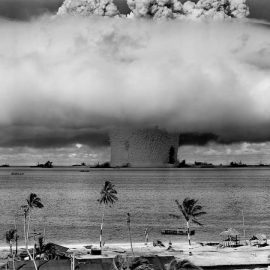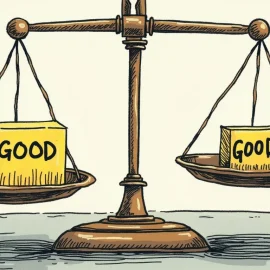

This article is an excerpt from the Shortform book guide to "Biased" by Jennifer L. Eberhardt. Shortform has the world's best summaries and analyses of books you should be reading.
Like this article? Sign up for a free trial here .
Was segregated housing a thing of the past or is it still present today? How can physical spaces be used as tools for bias? Is technology hurting or helping the problem?
In her book Biased, Jennifer Eberhardt revealed that although it’s now illegal, de facto segregated housing still persists today. This happens because if a neighborhood is even 30% black, people assume it has high crime rates and low property value and opts not to live in it. Thus, housing segregation still persists.
Continue below to read the sad truth about modern segregated housing.
Bias in Housing and Neighborhoods
We’ll see how bias impacts very personal decisions—like where to live. Today, segregation and racial bias in housing is a major problem, especially in large cities. This problem stems from a long history of racist policies that severely limited where black people could buy or rent property. Although most of those policies no longer exist, they created a pattern of de facto segregated housing that persists to this day.
The History of Segregated Housing
In the early 20th century, private housing developers began instituting official real estate covenants as a response to black Southerners migrating northward. These covenants forbade white homeowners from renting or selling their homes to black people; if a white homeowner ignored this covenant, the new black occupants could be legally evicted based on their race because racial covenants were “voluntary private contracts.” Racial covenants were so widespread that by the time the Supreme Court banned them in 1948, black residents were banned from 80% of the neighborhoods in big cities like Los Angeles.
For over 30 years, racial covenants ensured that black homeowners and renters were crowded into tiny neighborhoods, completely segregated from their white neighbors. Those covenants are the origin of the segregated neighborhoods and ethnic ghettos that still exist today. During this time, there was no legal recourse for people facing housing discrimination—if anything, government policies were even more discriminatory. State and local government policies varied, but many places had zoning regulations that specifically barred all non-white people from certain areas.
| The Link Between Implicit Bias and Segregated Housing In Biased, Eberhardt describes the history of housing segregation primarily as a backdrop to discuss modern racial discrimination in housing. The policies she describes are primaryly examples of explicit bias, since they were deliberately designed to keep black families out of white neighborhoods. However, implicit bias also played a strong role in the history of housing segregation. In The Color of Law, Rothstein describes “blockbusting,” a tactic that real estate agents used to scare white homeowners into selling their homes at a steep discount. While these agents sometimes relied on explicit bias by touting lies that black people moving into a neighborhood would reduce property values, they often employed subtler methods that preyed on white homeowners’ existing implicit biases. For example, real estate agents would pay black mothers to walk their babies through white neighborhoods. The agents knew that the mere sight of a black person in their neighborhood would activate white homeowners’ implicit biases and ultimately make them more likely to sell. These tactics were so successful that they led to the phenomenon of “white flight,” in which white people moved out of racially diverse neighborhoods en masse, often fleeing to the suburbs, which were still almost exclusively white. |
Modern Segregation
Racial discrimination in housing is now technically illegal, but nearly 70 years of officially sanctioned segregation left its mark on American cities. Today, African Americans are more likely to live in segregated neighborhoods than people of any other race—regardless of their economic status. What’s more, Eberhardt argues that segregation is largely maintained by white people’s racial biases. Studies show that most white people wouldn’t move to a neighborhood that is even 30% black, citing fears of high crime rates and low property values.
(Shortform note: In her 2018 memoir, Becoming, former First Lady Michelle Obama describes a visceral childhood encounter with antiblack bias in white neighborhoods. The former First Lady and her family visited their close friends, a light-skinned black family, who had recently moved to the suburbs. When it was time to return home, the family discovered that someone had keyed a deep gouge in their Buick, most likely as a warning that they weren’t welcome in that white neighborhood.)
Racial bias also skews white people’s perception of risk and danger: The more black people living in a given neighborhood, the higher white people estimate the crime rate to be and the more they fear for their own personal safety. But Eberhardt argues that these biased ideas about black spaces don’t just affect white people—one study showed that both white and black people report seeing more “disorder” (like graffiti or loose garbage) in black neighborhoods, even if the neighborhood is actually well-maintained. Another study showed that people of all races associate black neighborhoods with words like “dangerous” and “dirty.” In fact, research shows that people are willing to pay $22,000 more for a house if they think the previous owners were white than they would if the owners were black.
| “Space Racism” and Attitudes Toward Black Spaces These biased attitudes toward black spaces reflect the idea of “space racism” that Ibram X. Kendi describes in How to Be an Antiracist. “Space racism” describes the combination of attitudes and policies that contribute to inequality between spaces that are primarily inhabited by people of one race. For example, the funding gap between majority-white and majority-black schools is an example of space racism because it reflects the racist attitude of people in power that white children deserve more resources than black children. As a concept, space racism also describes the bias Eberhardt observed against black neighborhoods, because people who hold those biases ignore the fact that majority-white neighborhoods can also experience dangerous crime, including mass shootings. In fact, a 2019 study funded by the Department of Justice found that perpetrators of mass shootings in K-12 schools, places of worship, and commercial locations are most often white men. |
Bias in Neighborhoods and Communities
Racial biases can affect where we live and who we allow into our communities—but the physical and cultural makeup of those communities also, in turn, affects our racial biases. For example, if someone grows up in a culture with entrenched anti-black racial bias, they’ll most likely see that bias as just another social norm; if they move to a place with an actively antiracist culture, their idea of social norms will shift to reflect that.
Physical Space as a Tool of Bias
The physical environment a person lives in plays an important role in the biases they develop. Physical space can both reflect and reinforce bias. For example, “Whites Only” signs on businesses and drinking fountains reflect the racial bias of people in that space, but they also ensure that anyone who spends time there begins to share that bias (because when you’re literally, physically surrounded by a certain message, it’s easy to wind up believing it). Today, racially segregated housing and neighborhoods work the same way—they reflect a history of racial bias and reinforce the message that “this is how things should be.”
For black people, living in those kinds of heavily segregated environments is not only demoralizing: It’s a constant reminder of an underlying threat of violence. Whether through lynch mobs or police brutality, black people have always faced deadly violence in white spaces. That constant threat of violence turns the physical space itself into a tool of subjugation—it’s impossible to live, work, or merely exist in those spaces without being reminded of your place in the social hierarchy and the potentially deadly consequences for stepping out of it.
| Police Brutality: Retaliation for Barack Obama’s Success? In her 2020 book Caste, author Isabel Wilkerson argues that lynch mobs and police brutality are violent tools designed to keep black people in their place. She also argues that the recent spike in police violence against black people is, in part, a reaction to the election (and re-election) of Barack Obama. According to Wilkerson, many white people saw a black man occupying the highest office in the country as a threat to white social dominance. The ensuing panic brought up buried racist sentiments, which manifested in two ways: politically, in the form of the birther movement and the Tea Party; and socially, in the sudden explosion of racist hate groups. This increase in public anti-black sentiment was a precursor to the increase in police violence against black Americans. |
Technology and Bias in Neighborhood Interactions
Today, much of the interaction between neighbors that once took place in person has moved into the digital space. When it comes to racial bias, this is both a blessing and a curse. On one hand, technology gives people from racial minorities a tool to document the bias they experience in daily life. For example, when a white man in Michigan fired his shotgun at a black teenager who came to his door asking for directions, the security camera integrated into the man’s doorbell recorded the entire incident; the recording corroborated the terrified 14-year-old’s story and led to the homeowner’s arrest and eventual conviction. Without that recording, the boy would have been powerless in the face of the biased criminal justice system.
(Shortform note: The perpetrator in this case, Jeffrey Zeigler, was convicted of “assault with intent to do great bodily harm less than murder” as well as possessing a firearm in the commission of a felony. He was sentenced to 4-10 years in prison. However, in 2020, Zeigler and his new defense attorney appealed the ruling and requested a full sentencing review, in part because they believe that a detective’s testimony in the original hearing “improperly injected race into the case when it really wasn’t an issue.”)
On the other hand, technology can also escalate racial bias in dangerous ways. The lightning speed of online communication makes it easier than ever to circulate biased information. For example, if racial bias leads a white person to see a nervous black teenager as a threat, they can send a photo of the “suspicious person” to the entire neighborhood in the span of seconds. That decision can put an innocent person’s life at risk: While the person sending the message may not be the violent type, who’s to say their neighbors won’t take a “shoot first, ask questions second” approach like the homeowner above?

———End of Preview———
Like what you just read? Read the rest of the world's best book summary and analysis of Jennifer L. Eberhardt's "Biased" at Shortform .
Here's what you'll find in our full Biased summary :
- How implicit bias forms in the brain
- Whether or not bias training actually works
- Why there has been a sudden resurgence in white nationalism






